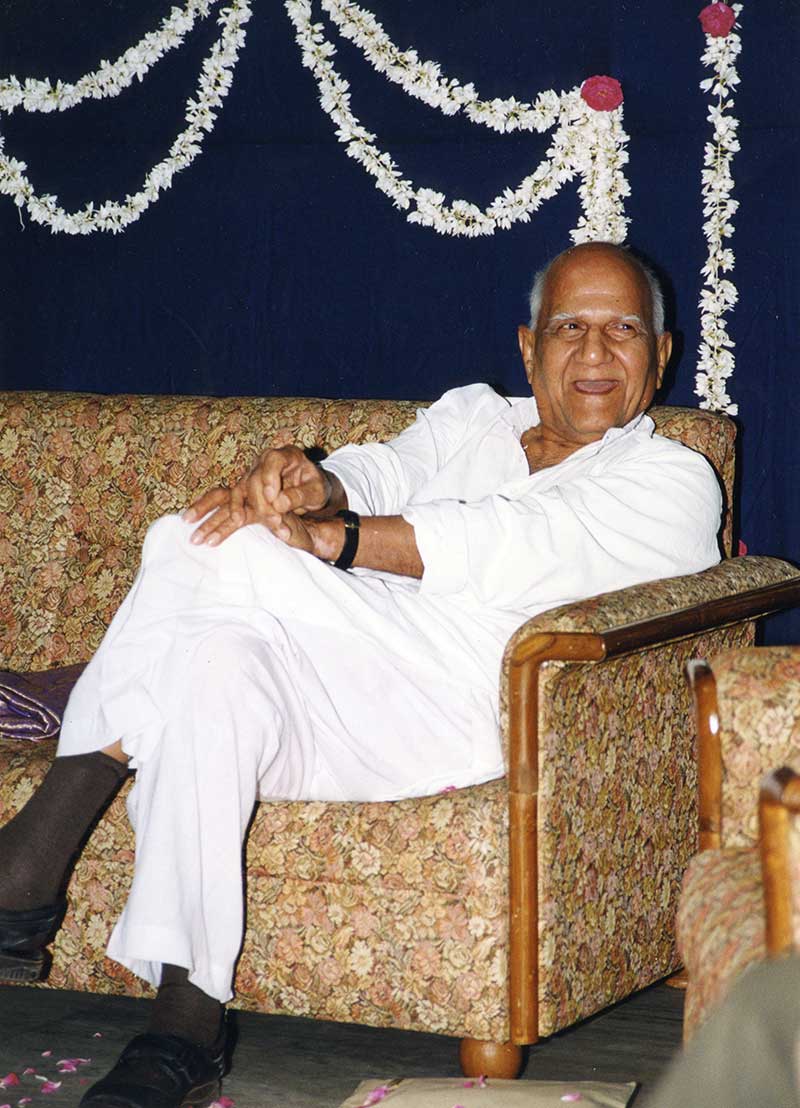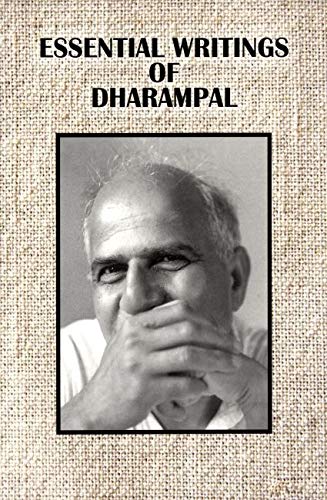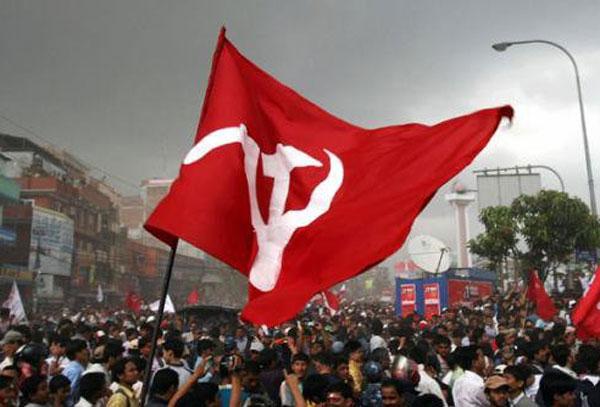- Visitor:23
- Published on:
In the Footsteps of Hind Swaraj. The Oeuvre of the Historian and Political Thinker Dharampal – 5
Dharampal’s research into the field of indigenous education was instigated by a statement made by Mahatma Gandhi during a speech at the Royal Institute of International Affairs in 1931.

Of the seventeen documents presented in this book [Indian Science and Technology in the 18th century], six deal with science (focusing on complex astronomical calculations, appreciative evaluations of the observatory in Benares, and on achievements in algebra, such as the binomial theorem). The eleven documents in the longer section devoted to technology describe a wide variety of implements and practices observed in different regions of the subcontinent, among which figure prominently the practice of smallpox inoculation in Bengal as well as the familiarity with plastic surgery in western India; the use of the drill-plough and other sophisticated agricultural implements including irrigation techniques; detailed descriptions of iron and steel-making in various parts of India; the technique of ice-making in Allahabad and Calcutta, that of mortar production in Madras, and of widespread paper-making from san plants. Accompanying many of these detailed accounts (originally intended for a British scientific readership and sometimes even presented to parliamentary committees) are intricate diagrams illustrative of the exact construction of the observed apparatus. This fact in itself would seem indicative of the latter’s subsequent appropriation and further development in accordance with British industrial requirements at the turn of the 19th century. Although the compactness and simplicity of fabrication – as of the mobile iron and steel furnaces (numbering up to 10,000 with each producing 20 tons annually) or the ingenious drill-ploughs – may have appeared crude to some British observers, Dharampal contests this impression by maintaining that the inherent simplicity
“[…] was in fact due to social and political maturity as well as arising from an understanding of the principles and processes involved. Instead of being crude, the processes and tools of eighteenth century India appear to have developed from a great deal of sophistication in theory and a heightened sense of the aesthetic.”[1]
Needless to say, his ulterior aim in publishing this documentary evidence of the relatively high level of Indian scientific and technological achievements in the 18th century was to initiate a paradigm shift in India’s modernising agenda: According to him, the still existing indigenous expertise needed to be taken into serious consideration in order to stimulate innovation and creativity – inspired by the grassroots – in the ongoing developmental enterprise.[2] Although high-profile seminars were held, no concrete action was taken. The project to found an institute (which would have enabled more extensive research to be done and could have led to an Indian pendant of Joseph Needham’s multi-volume oeuvre on China) was unfortunately never brought to fruition. Nonetheless, Dharampal’s book did have another lease of life a decade later: It inspired young IIT scientists from the PPST group[3] to engage in innovative swadeshi research into indigenous scientific and technological practices.
Dharampal’s second, slimmer book on Civil Disobedience in Indian Tradition is equally significant, albeit in a different manner, and yet has not received due recognition until today. As elucidated in the introduction, which has been reproduced in this volume,[4] the book underscores the Indian embeddedness of Gandhian satyagraha. But in doing so, it constitutes a strong refutation (supported by historical empirical evidence) of conventional views regarding the origins of civil disobedience in India: According to mainstream opinion, Gandhiji had either appropriated this non-violent technique of protest from western luminaries such as Thoreau or Tolstoy, or he had invented it himself. Consequently, it was commonly considered that ordinary Indians possessed no fundamental understanding of the philosophical and organisational principles governing satyagraha. How misconceived these views were is explicitly shown by this exceptional documentary analysis.
The historical evidence is provided by British administrative reports of a major non-violent protest against the imposition of a house-tax in Varanasi and neighbouring regions. This massive movement of resistance was organised and carried out extensively between 1810 and 1811. In reproducing the detailed reports written by perturbed colonial officers, Dharampal’s succeeds above all in underscoring the perspective of the protestors. Thereby, he exemplifies, by means of the empirical data presented, how socio-political and cultural expressions of popular demands not only explicitly aimed to safeguard the interests of the governed, but also were simultaneously attempting to redress the balance of power between the rulers and the ruled. Moreover, as documented in the British reports, the massively organised resistance testified to the fact that traditionally the ‘consent of the governed’ constituted an integral element validating the political authority’s legitimacy. This, in itself, underscored that the moral right to exercise state power was, or ought to be, derived from the people over whom power was exercised. And in the negative scenario, the right to protest or to enact a revolution formed part of this quasi social-contract theory, according to which people were entitled to legitimately instigate resistance if the government misused its authority in acting against their interests. As averred by Dharampal, such assertions of legitimate rights were recognised as such by pre-colonial political authorities themselves, besides being shared and enacted by the community at large; for they were influenced by prevalent and mutually acknowledged religious and ethical-philosophical conceptions of justice and societal well-being. The basically non-violent nature of the documented protests in Varanasi – described as being meticulously organised and exhibiting political skill – testified first and foremost to the peoples’ self-assurance in their own legitimate cause and its strength. Equally significantly, the fact that these protests were initially staged without fear of reprisals – Dharampal perspicaciously deduces – epitomises the belief in the hitherto enjoyed relationship of mutuality and trust between the rulers and the ruled.
As becomes apparent from a close reading of the documents, the colonial intervention changed the customary ‘rules of the game’ of negotiating political asymmetries of power: on the one hand, by illegalising such traditionally exercised ‘trials of strength’, and, on the other, by redefining relationships between social groups and – more importantly – by foregrounding the starkly rigid asymmetry between colonial authority and the colonised populace.

Dharampal poignantly highlights the discrepant views concerning the appropriate relationship between state and society: in the first instance, as expressed by the protesting inhabitants of Varanasi who considered that the legitimacy of their demands should be acknowledged; secondly and contrastively, by the British administrators who demanded obedience and submission to their authority. For the British were above all intent on establishing ‘law and order’. Outlining this antagonistic scenario constitutes the crucial contribution of this volume. As a result, the reader not only gains a better understanding of India’s recent past, but is also sensitised to its significant political relevance to the present. Concerned with the need both to acknowledge the legitimate rights of the Indian populace as well as to facilitate ordinary citizens’ active participation in national politics, Dharampal formulates the fundamental political message of the book at the end of his introduction as follows:
“It is suggested that non-cooperation and civil disobedience are integral to the well functioning and even to the security of a free and democratic society. In a way, they are even more crucial than stratified courts of law, the present forms of periodic local, state-level or national elections, or the rather stilted and constrained debates and considerations within such elected bodies. Instead of being hostile and inimical, those who resort to non-cooperation and civil disobedience against callousness, authoritarianism and injustice are the protectors of their state and societies. Without them, a society will end up at best performing some mechanical ritual; or, more often, in tyranny, leading to anarchy and armed insurrection.”[5]
Dharampal’s third major book The Beautiful Tree: Indigenous Indian Education in the 18th century,[6] was published in 1983, and was perhaps the most acclaimed of all his publications. The tome, comprising ca. 450 pages, provided documentary evidence of the widespread prevalence in late 18th and early 19th century India of educational institutions. These schools taught a sophisticated curriculum, with daily school attendance by about 30% of children aged between 6 to 15 years. Astoundingly the majority of students belonged to communities who were classed as shudra or even lower. In some areas, for instance in Kerala, even Muslim girls were quite well represented. This data was a real eye-opener for the reappraisal of the historical tradition of education in India. What’s more, the findings conclusively refute the hitherto widely accepted assumption that, before the British raj, education in India was the sole prerogative of the twice-born castes, if not exclusively of the Brahmins. Ironically, this undemocratic and unequal social prioritisation became the state of affairs only after the establishment of English medium schools towards the end of the 19th century – a skewed situation which persists in large measure in contemporary India.
Dharampal’s research into the field of indigenous education was instigated by the following statement made by Mahatma Gandhi during a speech at the Royal Institute of International Affairs in 1931:
“I say without fear of my figures being challenged successfully, that today India is more illiterate than it was fifty or a hundred years ago, and so is Burma, because the British administrators, when they came to India, instead of taking hold of things as they were, began to root them out. They scratched the soil and began to look at the root, and left the root like that, and the beautiful tree perished.” [7]
Subsequently, Sir Philip Hartog, former vice-chancellor of Dacca University and chairman of the auxiliary committee of the Indian Statutory Commission, contested this claim and requested written evidence which Gandhiji (being preoccupied with the Independence struggle in 1930s and 1940s) was unable to provide to the former’s satisfaction. Dharampal’s book, deriving its title “the Beautiful Tree” from Gandhiji’s metaphor and in providing statistical proof to substantiate Gandhiji’s statement, can also be seen as a delayed response to Sir Hartog’s query.
The substantial documentary evidence contained in the book originates from various administrative sources, namely official surveys of indigenous education in the Presidencies of Madras (1822-26, commissioned by Governor Sir Thomas Munro), Bengal (1835-38, known as the William Adam’s Report), and in the Punjab (1849-1882, penned by G.W. Leitner).[8] The volume also includes reports from Malabar by a Carmelite missionary, Fra Paolino da Bartolomeo, in 1796 referring among other matters to the famous monitorial system, as well as by Alexander Walker in 1820 on traditional practices in education and on the wide prevalence of literary learning. Moreover, it is noteworthy that the conclusive statistical data of relatively widespread ‘liberal’ education in village elementary schools and institutions of higher learning enjoyed by large sections of the population[9] refers to periods several decades after the conquest of these regions. Hence, this empirical evidence leads one to assume that the level of education provided must have been even higher before the advent of British rule. Such an assumption is substantiated by the collector of Bellary who graphically describes the state of decay into which the schools had fallen because of their neglect by the British administration and as a consequence of the “gradual but general impoverishment of the country.”[10]
Notwithstanding this noticeable degeneration, it is astounding that acclamatory statements such as Governor Munro’s estimation in 1826 (on the basis of the extensive surveys received from the diverse districts of the Madras presidency) that “the portion of the male population who receive school education to be nearer to one-third than one-fourth of the whole”[11] could be made. No doubt, the colonial governor’s appreciative stance needs to be understood against the backdrop of the comparatively low level of contemporary British education, about which Dharampal, in his extensive introduction, provides a critically discerning overview: He avers – citing statistical data relating to the British Isles – that “school education, especially elementary education at the people’s level, was rather an uncommon commodity until around 1800”.[12] In all due fairness, he does go on to trace the subsequent novel development of publicly institutionalised school education in the first half of 19th century Britain. Yet, in sketching this early modern Indo-British comparative and diachronic educational scenario, Dharampal succeeds in underscoring the rationale behind British administrators’ avid interest in reporting about prevalent Indian schools, including the reasons for their being impressed by their findings[13] despite the observable decline.
Admittedly, the primary objective governing this study was to dispel the all-too pervasive myth about India having received the boon of education from the British as part of their civilising mission. At the same time, the politically contestatory nature of his intervention, with a view to overhauling the contemporary pedagogic system, is succinctly formulated in a concluding paragraph of the book’s introduction:
“What India had in the sphere of education two centuries ago and the factors which led to its decay and replacement are indeed a part of history. Even if the former could be brought back to life, in the context of today, or of the immediate future, many aspects of it may no longer be apposite. Yet what exists today has little relevance either. An understanding of that which existed and of the process which created the irrelevance India has today, in time, could however help devise what best suits India’s requirements and the ethos of its people.”[14]
This clarion-call has subsequently instigated many to rethink the definition and content of present-day education:[15]Such inspired educationalists aim to reinstate a pedagogy that equips children to be able to more fully participate in and work towards the well-being of their local communities and regions. Educational programmes of this nature are striving to provide a corrective to the present dilemma created by semi-westernised schooling which tends to alienate the youth from their familiar environments and to produce (mostly unemployable) graduates for a job-market determined by the globalised economy.
Source: Gita Dharampal, “Introduction” in Essential Writings of Shri Dharampal (New Delhi: Publications Division, Government of India, 2015), pp. 15-19
This extract has been published with permission from Publications Division, Government of India
References
[1] Indian Science and Technology, op.cit., p.LXXIII
[2] This crucial aspect is elaborated further in: Dharampal: “Indigenous Indian technological Talent and the Need for its Mobilisation”, lecture delivered at the Birla Industrial and Technological Museum, Calcutta, October 4, 1986; published in PPST Bulletin (Chennai), No.9, December 1986, pp. 5-20; republished in: Collected Writings, op. cit., vol. V, pp. 50-108. Other lectures with a similar bearing were “The Question of India’s Development” (IIT, Bombay, January 1983), “Some Ideas on the Reindustrialisation of India”, published in: Rediscovering India, op. cit., pp. 172-184 & 185-191, respectively.
[3] An acronym for the Patriot and People-oriented Science and Technology group of enterprising young scientists, founded in the late 1970s; cf. above reference to the PPST Bulletin, to which Dharampal made regular contributions.
[4] Reproduced in the full text of Essential Writings
[5] Civil Disobedience in Indian Tradition, op. cit, p. LXI;
[6] Biblia Impex Private Limited: New Delhi, 1983; reprinted by Keerthi Publishing House Pvt. Ltd.: Coimbatore, 1995.
[7] Quoted in The Beautiful Tree, ibid., p. 355.
[8] Though these official surveys had all been published, and extracts of Munro’s survey were even available in the House of Common Papers of 1831-32, it is astounding that their factual portent was not heeded by previous scholars concerned with the history of Indian education.
[9] The Madras Presidency survey (1822-1826) gives concrete statistical data stating that 11,575 schools and 1,094 colleges were still in existence with the number of students being 157,195 and 5,431 respectively. Further that sudras and castes below them formed 70%-80% of the total students in Tamil-speaking areas, 62% in Oriya areas, 54% in Malayalam areas, and 35% in Telugu areas. In Malabar, 1,222 Muslim girls, as compared to 3,196 Muslim boys, attended school; the representative curriculum taught comprised, besides the three Rs., also disciplines such as literature, astronomy, law and sciences; data extracted from The Beautiful Tree, ibid., pp. 1-251.
[10] Report of the Collector, Bellary to the Board of Revenue, 17.8.1823, ibid., p. 182.
[11] Ibid., p. 20.(reproduced in this volume, p.) This estimation was made after taking into consideration the sizeable number of boys (from upper as well as other castes) being taught at home, over and above the statistical data providing evidence that one fourth of all boys between the ages of 5 and 10 years were attending village schools.
[12] Ibid., p.6;
[13] According to the Adams Report, there were 100,000 schools in Bengal and Bihar in the 1830s, and in the Madras Presidency in the early 1820s, according to Governor Munro, there was “a school in every village”, ibid., p.73.
[14] Ibid., p.79.
[15] An exemplary case in point would be the educational work initiated by SIDH, Mussoorie, in the Himalayan region.
- 11 min read
- 0
- 0










